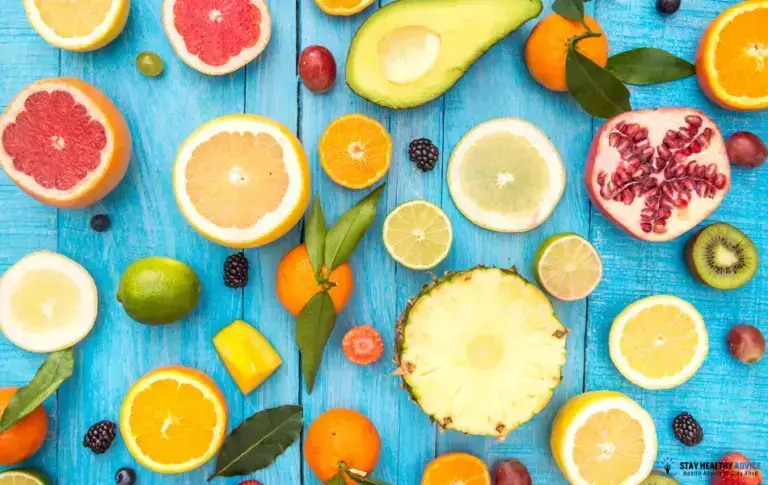
Consuming a variety of healthy fruits gives the body nutrients and antioxidants that can enhance general health and wellness. Great options include oranges, blueberries, apples, avocados, and bananas, but there are a lot more to select from.
Fruits are a superb source of essential vitamins and minerals, and they are high in fiber. Fruits also offer a wide range of health-boosting antioxidants, including flavonoids.
Eating a diet plan high in vegetables [15 Healthiest Vegetables: Nutrition and health benefits] and fruits can minimize a person’s threat of developing heart disease, cancer cells, inflammation, and diabetes mellitus. Citrus fruits and berries might be especially effective for protecting against illness.
This write-up considers the nutrition and the many different health and wellness advantages of these and various other fruits.
Types of fruit juice include orange juice, cranberry juice, apple juice, and more. Fruit juice benefits can rely on the type of juice. Some risks are likewise connected with drinking huge quantities of particular juices.
Fruit juice comes from the flesh of the fruit or from the entire fruit itself. The method of making fruit juice varies depending on the fruit, however many suppliers make juice by crushing or “pushing” the fruit to eject the juice within, after that pasteurizing or adding preservatives before packaging the end product.
Though numerous fruit juices have wellness benefits, consuming too much fruit juice can cause health and wellness complications for individuals, such as weight gain or changes in blood glucose degrees.
This post talks about the different fruit juices readily available, their health and wellness benefits, and particular threats.
The distinction between ‘concentrate’ and ‘not from concentrate’ juices.
Makers often explain fruit juices as “from concentrate” and “not from concentrate”. This describes the production process.
Make juice that is “not from concentrate” by juicing the fruit before sterilizing it. Sterilizing entails heating the juice to eliminate microorganisms. Suppliers after that package the juice and sell it.
Juice that suppliers refer to as “from concentrate” has one added action in its manufacturing process. Firstly, the manufacturers juice the fruit. After that filter it in a process that extracts the water from the juice. This means the juice uses up much less area during transportation.
Before pasteurizing, manufacturers include water back into the juice concentrate. After pasteurizing, makers then package the juice for sale.
How Much Fruit Juice is Healthy and Balanced?
Eating the everyday suggested quantity of fruits and vegetables can assist individuals reduce their risk of many leading reasons for health problems and death. These include cardiovascular disease, type 2 diabetes, some cancer cells, and obesity.
According to the Centers for Disease Control and Prevention (CDC), the day-to-day recommended quantity of fruit is:
- Adult females: A minimum of 1 and a half mugs of fruit daily
- Adult males: A minimum of 2 mugs of fruit each day
The United States Department of Agriculture (USDA) mentions that at least fifty percent of the daily recommended quantity of fruit needs to originate from whole fruit. This means that a person must not obtain their everyday suggested allocation from fruit juice alone.
The CDC mentions that just 12% of grownups in the USA eat the advised quantity of fruit.
In contrast to whole fruit, fruit juice tends to use less fiber material and more calories and sugar.
That is why an individual needs to restrict the amount of fruit juice they drink each day.
Some research suggests that high degrees of fruit juice might not be good for youngsters as they have large quantities of sugar.
The American Academy of Pediatrics advises the following maximum every day quantities of fruit juice for children:
- Children aged 1 – 3 years of ages: No greater than 4 ounces of fruit juice daily
- Kids aged 4 – 6 years old: 4 – 6 oz of fruit juice each day
- Kids aged 7 years old and over 8 oz of fruit juice each day
Grownups must limit themselves to no more than 8 oz of fruit juice per day.
Eating a diet plan high in veggies and fruit canisters reduces an individual’s danger of developing cardiovascular disease, cancer, swelling, and diabetes. Citrus fruits and berries might be particularly effective for protecting versus condition.
This short article considers the nourishment and the many different health and wellness advantages of these and various other fruits.
1. Lemons
Lemons are a citrus fruit that people frequently use in typical remedies due to their wellness advantages. Like various other citrus fruits, they consist of vitamin C and various other antioxidants.
Antioxidants are crucial for human wellness. These compounds mop up free radicals in the body that can harm the body’s cells and lead to illnesses, such as cancer.
Researchers believe that the flavonoids in lemon and other citrus fruits have anti-bacterial, anticancer, and antidiabetic homes.
Citrus fruits, including lemons, contain energetic parts called phytochemicals that benefit wellness. These include:
These consist of:
The juice from one 48 g lemon contains the adhering to nutrients in grams (g) or milligrams (mg):.
- 10.6 calories
- 3.31 g carbohydrate
- 49.4 mg potassium
- 18.6 mg vitamin C
- 2.88 mg calcium
- 0.1 g of fiber
Lemons also contain thiamin, niacin, riboflavin, folate, vitamin B6, and vitamin A.
Exactly how to Consume Lemons
Make use of the juice of a lemon to taste alcohol usage water or squeeze it over a salad or fish.
Attempt consisting of lemon juice to boiling water with a teaspoon of honey to aid alleviate an aching throat.
It is likewise viable to eat the peel of natural lemons. Some individuals use the peel in recipes.

2. Strawberries
Strawberries are a juicy red fruit with high water. The seeds offer plenty of nutritional fiber per offering. Strawberries include lots of healthy nutrients.
Of specific note, they include anthocyanins, which are flavonoids that can assist improve heart health. The fiber and potassium in strawberries can furthermore support a healthy heart.
In one research study, individuals assigned females at birth who consumed 3 or more portions weekly of strawberries and blueberries– which are both known for their high anthocyanin material– had a minimized risk of having a cardiovascular disease than those with lower consumption.
One mug, 150 g, of strawberries, offers the following nutrients:
- 48 calories
- 11.5 g carb
- 3 g of fiber
- 24 mg of calcium
- 19.5 mg of magnesium
- 230 mg of potassium
- 88.2 mg of vitamin C
Strawberries furthermore have thiamin, riboflavin, niacin, folate, and vitamins B-6, A, and vitamins K.
How to eat strawberries
Strawberries are a practical fruit. Individuals can eat them raw or include them in morning meal grains or yogurt, mix them into a smoothie mix, or make them right into jam.

3. Oranges
Oranges are a wonderful, round citrus fruit loaded with minerals and vitamins.
Oranges are amongst the wealthiest resources of vitamin C, with one device fruit providing 78% of an individual’s daily worth of vitamin C.
A 140 g orange likewise has the following nutrients:
- around 65 calories
- 16.5 g carb
- 2.8 g of fiber
- 60.2 mg of calcium
- 15 mg of magnesium
- 232 mg of potassium
- 82.7 mg of vitamin C
This vitamin is also vital for the body’s immune system attribute. It improves the immune system by assisting the body to take in iron from plant-based foods.
Precisely just how to consume oranges
Individuals can eat oranges by themselves as a rejuvenating treat or by consuming a glass of pure orange juice. Juice oranges in your home or select a brand of fresh juice whose tag states it is not from concentrate.
Individuals can, in addition, grate orange peel right into a salad or yogurt, or as a cereal topping to include added taste.
Oranges additionally give the complying with healthful vitamins:
- vitamin A, a compound that is important for healthy and balanced skin and vision
- B vitamins, including thiamin and folate, which assist in maintaining the anxious and reproductive systems are healthy and balanced and assist create red blood cells.

4. Limes
Limes are a sour citrus fruit that provides a range of wellness and health benefits.
Like other citrus fruits, limes provide a healthy dosage of vitamin C. They likewise have similar health and wellness benefits, consisting of anti-bacterial and antioxidant homes.
The juice of one lime provides the following nutrients:
- 11 calories
- 3.7 g carb
- 6.16 g calcium
- 3.52 mg magnesium
- 51.5 mg potassium
- 13.2 mg vitamin C
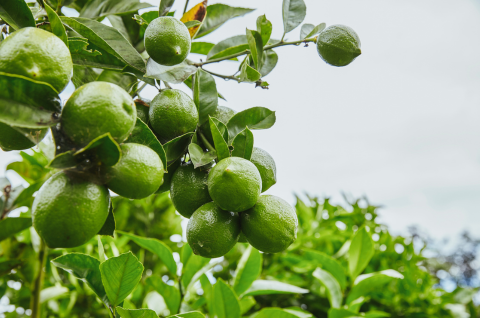
5. Grapefruit
Grapefruits can be pink, red, or white.
Half a grapefruit (154 g) consists of the sticking to nutrients:
- 64.7 calories
- 164 g carbohydrate
- 2.46 g fiber
- 33.9 g calcium
- 13.9 g magnesium
- 208 g potassium
- 48 g vitamin C
The flavonoids in grapefruits can help guard against some cancer cells, swelling, and weight issues.
A review study suggests the substances called furanocoumarins discovered in grapefruits can assist protect against oxidative anxiety and lumps, and they may sustain healthy bones.
Testimonial research recommends the substances called furanocoumarins located in grapefruits can aid protection against oxidative stress anxiety and swellings, and they may support healthy and balanced bones.
Some research study from this testimonial suggests that grapefruit furanocoumarins could have anticancer properties or industrial homes, which might be specifically trustworthy versus breast cancer cells, skin cancer cells, and leukemia.
Just how to eat grapefruit
Attempt including grapefruit pieces in a fruit salad, or push the juice into water to make a beverage.
Individuals can furthermore obtain pure grapefruit juice from the grocery store.
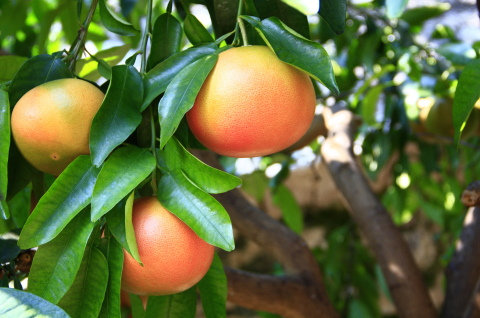
6. Blackberries
Like various other berries, blackberries contain health-boosting anthocyanins.
Blackberries have numerous seeds, so they have a high fiber.
Fifty percent a cup (75 g) of blackberries has the following nutrients:
- 32.2 calories
- 7.21 g carbohydrate
- 3.98 g fiber
- 21.8 mg calcium
- 15 mg magnesium
- 122 mg potassium
- 15.8 mg vitamin C
How to consume blackberries
Individuals can eat blackberries fresh, include them in yogurt for morning meals or treats, or include icy blackberries in shakes.
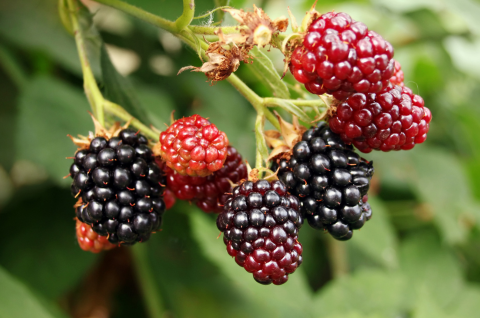
7. Apples
Apples make a quick and simple improvement to the diet regimen strategy. Consume them with the skin on for the greatest health and wellness benefits.
Apples are high-fiber fruits, showing that eating them can boost heart health and advertise fat burning. The pectin in apples assists in protecting great digestive tract health and wellness.
Research Studies have shown that there is a web link between eating apples frequently and a reduced danger of cardiovascular disease, particular cancers, and diabetes.
Apples additionally have high levels of quercetin, a flavonoid that may have anti-cancer buildings.
One study discovered that people who consumed entire apples were 30% more likely to have obesity than those who did not. This can assist in decreasing the danger of diabetes mellitus and heart problems.
One device apple with the skin has the following nutrients:
- 94.6 calories
- 25.1 g of carbohydrate
- 4.37 g of fiber
- 195 mg of potassium
- 10.9 mg calcium
- 8.37 mg vitamin C
How to eat apples
Raw apples make a wonderful treat, and incorporating them with almond butter helps stabilize healthy and balanced protein and fat consumption.
Individuals can furthermore include raw or stewed apples to yogurt, or utilize applesauce in food preparation.
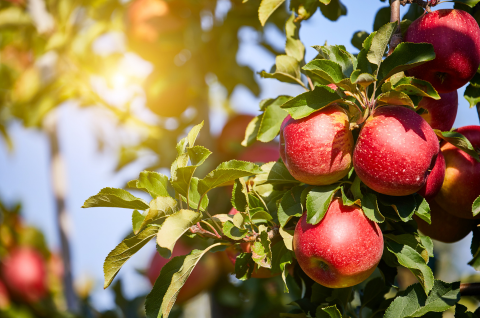
8. Pomegranate
Some individuals think about pomegranates to be a ‘superfood.’ They are high in antioxidants and polyphenols, which aid in fighting the oxidative anxiousness that can trigger health problems in the body.
A review study regarding the health and wellness advantages of pomegranates suggests that they have anti-inflammatory impacts and may aid protection versus brain-related conditions, such as Alzheimer’s illness and Parkinson’s disease. This might be because pomegranates include specifically high degrees of polyphenols.
One raw pomegranate (282 g) includes the following nutrients:
- 234 calories
- 52.7 g of carb
- 11.3 g of fiber
- 666 mg of potassium
- 28.2 mg calcium
- 28.8 mg vitamin C
One pomegranate furthermore has 46.2 micrograms (mcg) of vitamin K. This vitamin is important for strong bones and healthy blood cells.
How to take in pomegranate
Pomegranates can make an excellent improvement to salads, couscous, or rice meals.
Pomegranates are wonderful, so individuals can likewise include them in yogurt and fruit salads.
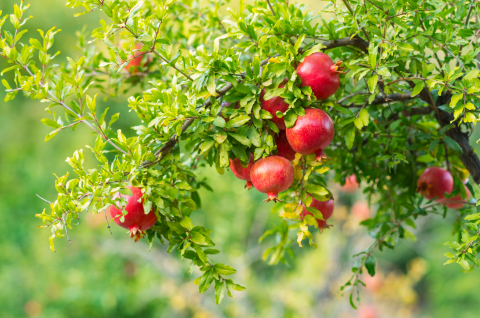
9. Pineapple
Pineapple is a special fruit that might help reduce swelling and promote healthy and balanced and balanced defecation.
The National Center for Complementary and Integrative Health specifies that bromelain might assist with reducing nasal swelling or sinusitis, though even more research is essential.
A piece of pineapple (166 g) consists of the following nutrients:
- 83 calories
- 21.7 g carbohydrate
- 2.32 g fiber
- 181 mg potassium
- 79.3 mg vitamin C
- 21.6 mg calcium
- 1.54 mg manganese
How to eat pineapple
People can appreciate fresh pineapple on its own or in fruit salads. They can likewise make use of pineapple to make tropical salsa or include it as a covering on fish tacos.
Try adding icy pineapple to drinks.
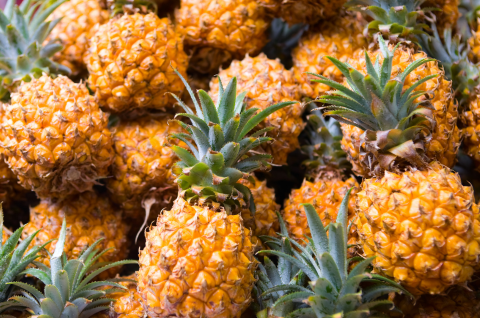
10. Bananas
Bananas are popular for their high potassium. One banana (126 g) consists of around 451 mg of potassium. Potassium helps the body in controlling hypertension.
One banana furthermore contains the following nutrients:
- 1.37 g healthy and balanced protein
- 6.3 mg calcium
- 34 mg magnesium.
- 11 mg vitamin C
How to consume bananas
A banana is a phenomenal fruit to take advantage of to increase the size of a healthy and balanced smoothie. Individuals can furthermore utilize them in baking as an all-natural sweetener or to make banana bread or pancakes.
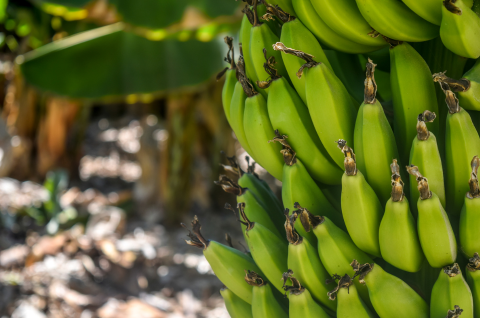
11. Avocado
Some individuals describe avocados as a superfood as a result of their healthful high qualities.
Avocados are bountiful in oleic acid, a monounsaturated fat.
One avocado (201 g) includes the following nutrients:
- 322 calories
- 4.02 g healthy protein
- 17.1 g carb
- 13.5 g fiber
- 24.1 mg calcium
- 58.3 mg magnesium
- 975 mg potassium
- 20.1 mg vitamin C
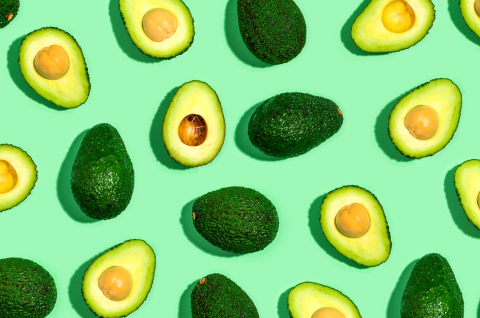
12. Blueberries
Blueberries can provide a great deal of health and health benefits.
Like strawberries, blueberries contain anthocyanin, which is an effective antioxidant. Due to this, they could protect against cardiovascular disease, stroke, cancer cells, and different other conditions.
Half a mug of blueberries (75 g) gives the following nutrients:
- 42.8 calories
- 10.9 g carb
- 1.8 g fiber
- 4.5 mg calcium
- 57.8 mg potassium
- 7.28 mg vitamin C
Berries have several health and wellness benefits. Study findings recommend consuming berries routinely can:
- shield the liver and mind
- strengthen the body’s immune system
- protect against cancer cells
- reduced type 2 diabetic issues threat
- help people maintain a moderate weight
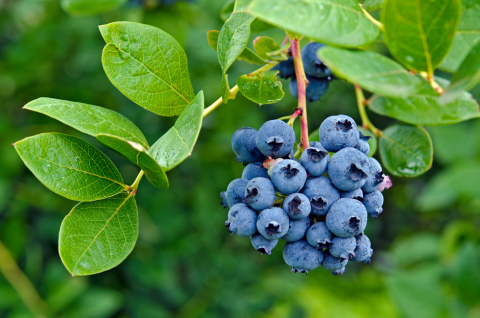
Summary
Different fruits have different health and wellness benefits. For the very best results, include a selection of fruits in the diet plan.
By eating fruit, an individual is offering their body essential vitamins, antioxidants, and dietary fiber. This can have considerable advantages for heart wellness, food digestion, weight administration, and skin health.
People can take pleasure in a wide range of fruits to enhance their health and wellness and reduce the danger of swelling, heart disease, cancer, weight problems, and diabetic issues.